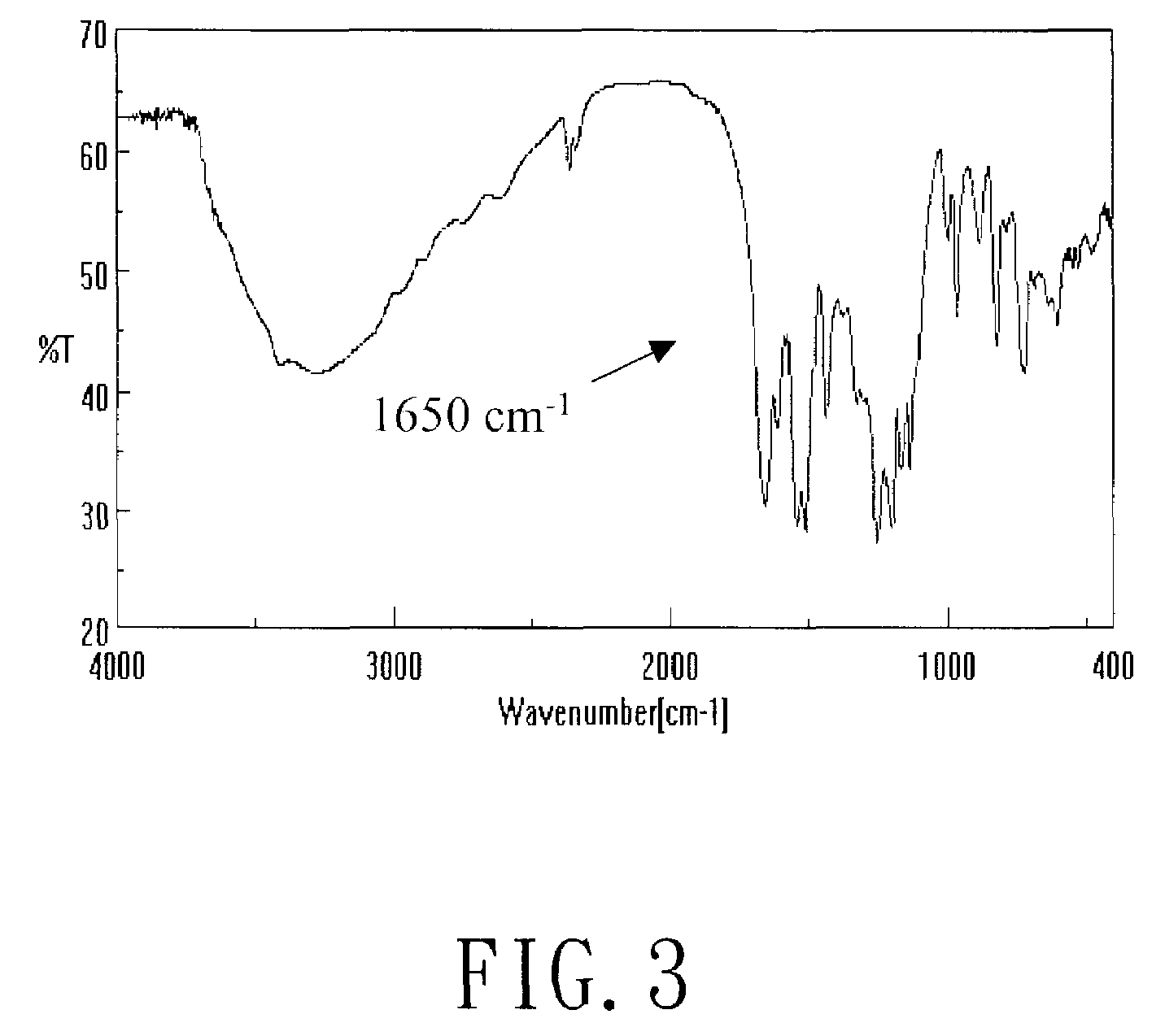Method for fabricating polybenzoxazole/clay nanocomposite materials
a nanocomposite material and polybenzoxazole technology, applied in the field of nanocomposite materials for fabrication of polybenzoxazole/clay nanocomposite materials, can solve the problems of warpage and cracking of products, synthesis of new monomers, expensive and time-consuming, etc., and achieve high surface to volume ratio, reduce the effect of thermal expansion coefficien
- Summary
- Abstract
- Description
- Claims
- Application Information
AI Technical Summary
Benefits of technology
Problems solved by technology
Method used
Image
Examples
Embodiment Construction
[0024]FIG. 1 is a flow chart illustrating the fabrication process of a polybenzoxazole (PBO) / clay nanocomposite material according to one aspect of the present invention.
[0025]Referring to FIG. 1, the fabrication process for a PBO / clay nanocomposite material comprises: step 100, wherein an ion exchange reaction, for example, a cation exchange reaction, is conducted between an organic amine type modifying agent and a layered clay to form a swelled organoclay. The organoclay is formed by treating layered clay, such as, a Na+-montmorillonite clay, with an ammonium salt of dodecylamine (DOA). The reaction is shown in the following:
[0026]
[0027]Further, the layered clay can also be, for example, saponite, mica, etc. The modifying agent can be organic amine of different structures, for example, dodecylamine, phenoxyaniline or 12-aminododecanoic acid.
[0028]Thereafter, in step 102, the diacid chloride of isophthaloyl chloride (IC) and 2,2-bis-(3-amino-4-hydroxyphenyl)hexafluoroproane (BisAPA...
PUM
| Property | Measurement | Unit |
|---|---|---|
| inherent viscosity | aaaaa | aaaaa |
| temperature | aaaaa | aaaaa |
| glass transition temperature | aaaaa | aaaaa |
Abstract
Description
Claims
Application Information
 Login to View More
Login to View More - R&D
- Intellectual Property
- Life Sciences
- Materials
- Tech Scout
- Unparalleled Data Quality
- Higher Quality Content
- 60% Fewer Hallucinations
Browse by: Latest US Patents, China's latest patents, Technical Efficacy Thesaurus, Application Domain, Technology Topic, Popular Technical Reports.
© 2025 PatSnap. All rights reserved.Legal|Privacy policy|Modern Slavery Act Transparency Statement|Sitemap|About US| Contact US: help@patsnap.com



